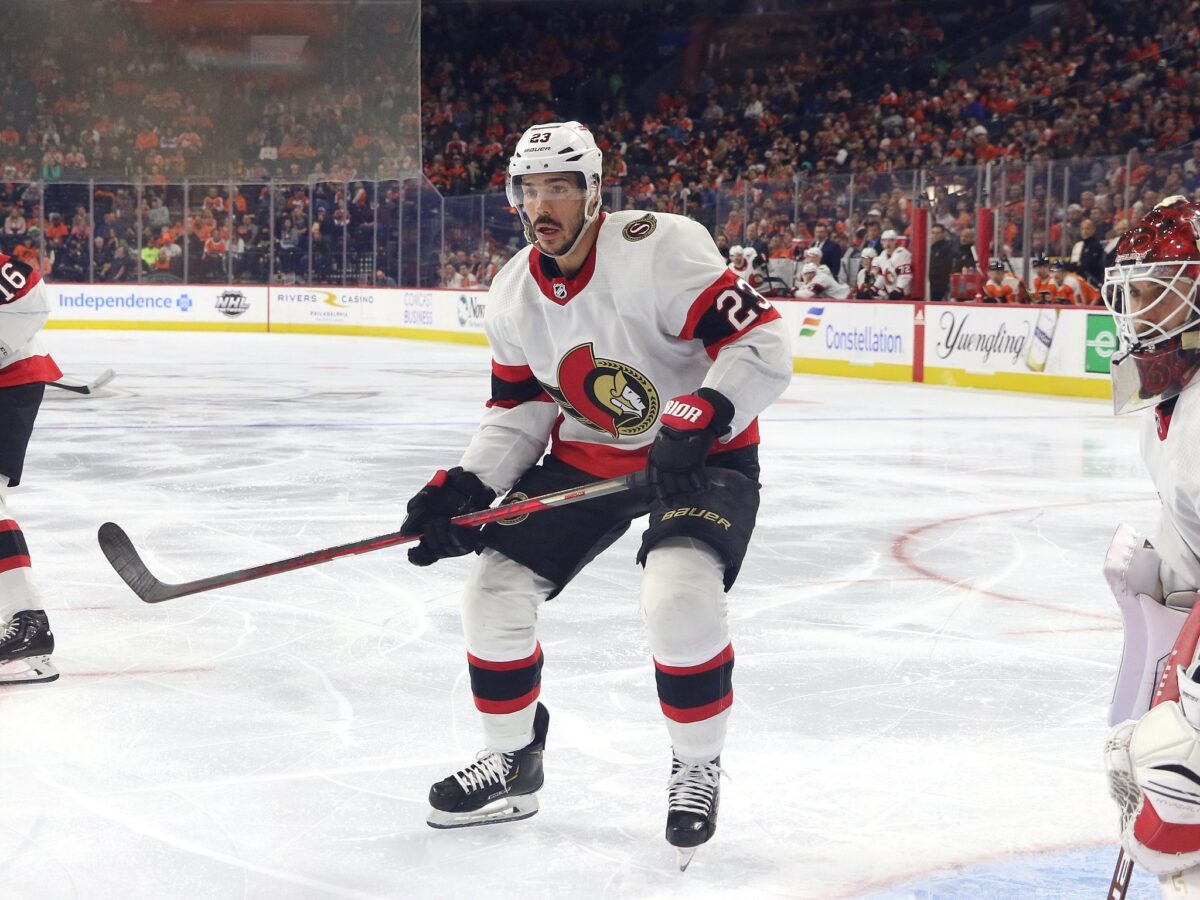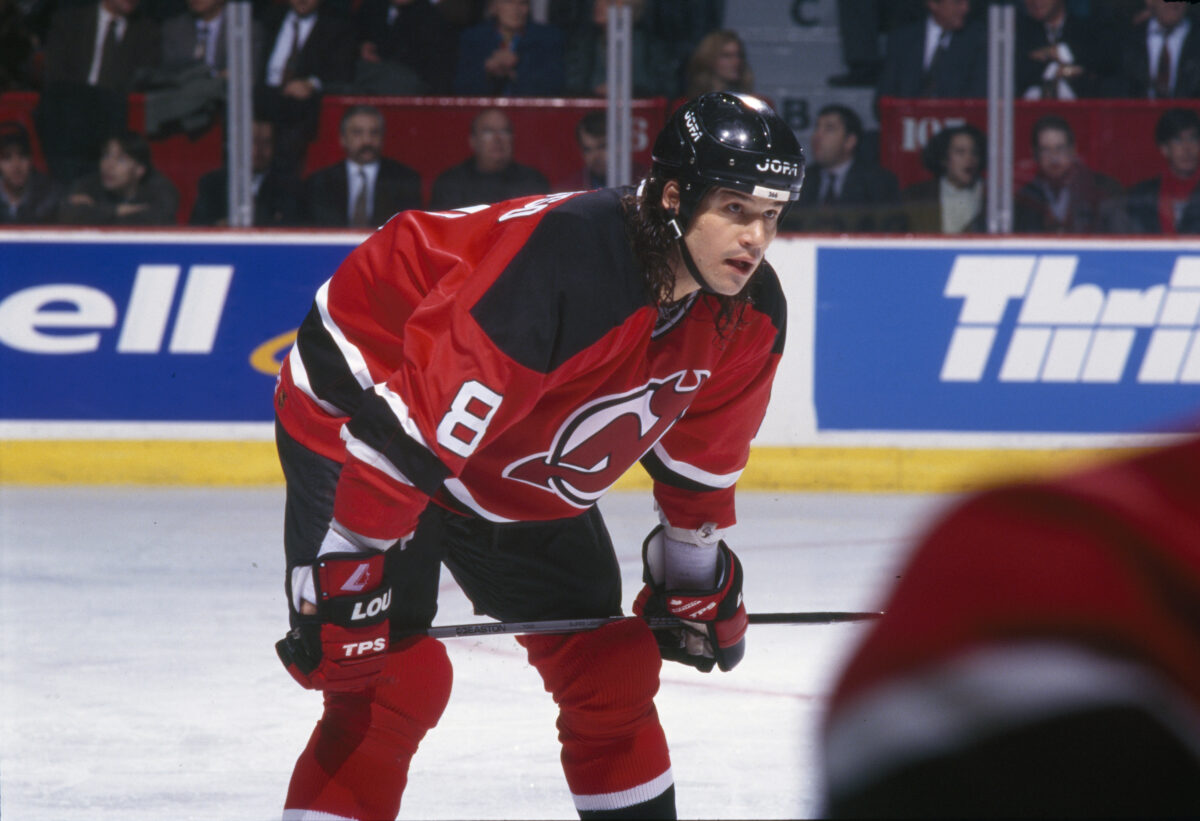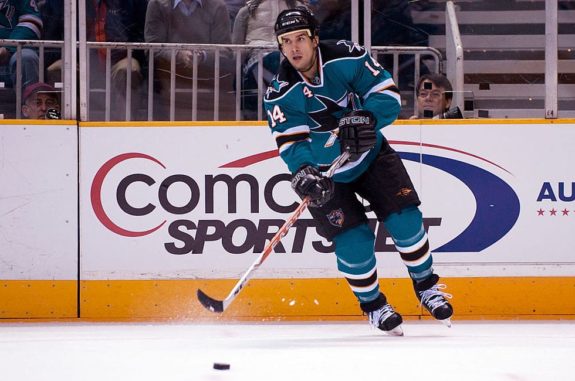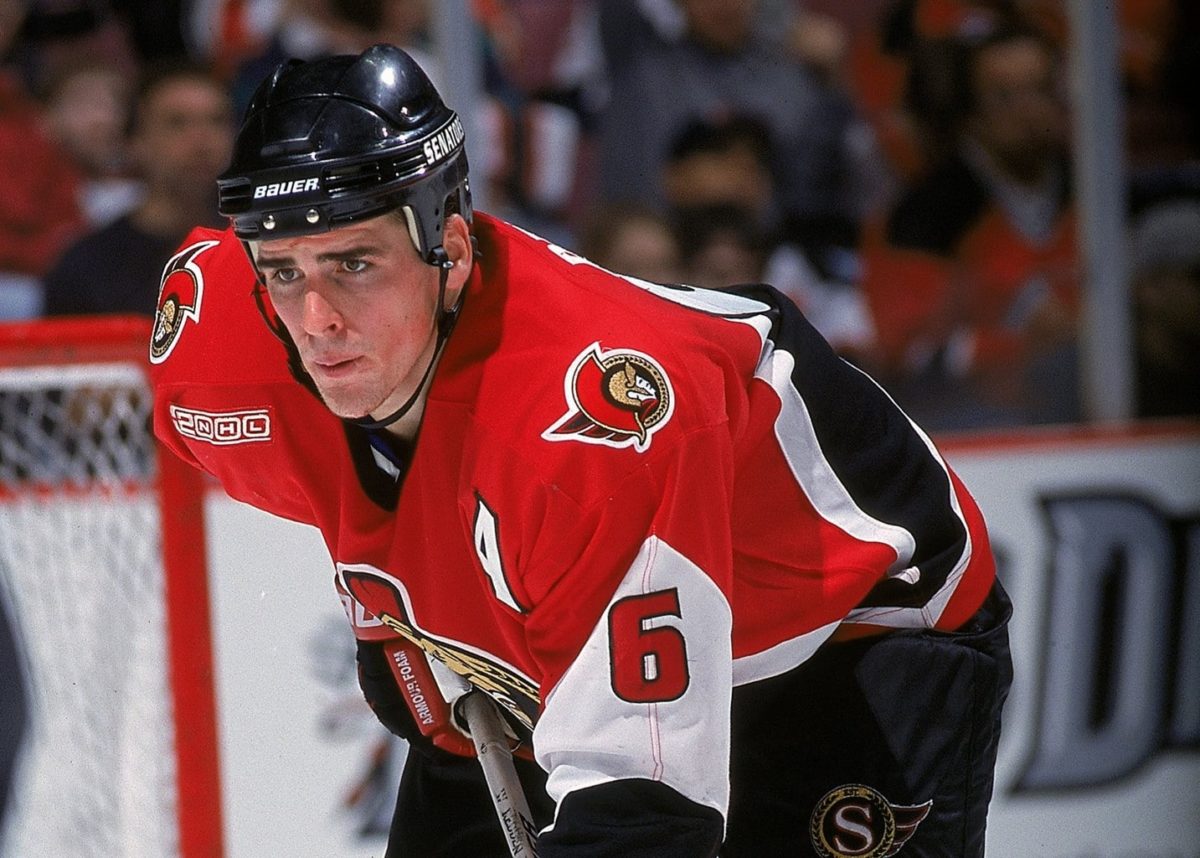Only eight players with Indigenous roots have ever laced up a pair of skates for the Ottawa Senators in the 31 years the modern version of the team has been in the NHL. That represents about one percent of the estimated 700 players who pulled on a Senators’ sweater in the past three decades. Yet, First Nations, Metis and Inuit people make up about five percent of the Canadian population.
I believe that the Senators would have liked more Indigenous players on their roster over the years. Yet that’s a challenge because native kids in Canada face barriers to advancing to the upper ranks of hockey that non-Indigenous kids don’t.
Barriers Indigenous Players Face in Getting to NHL
Fred Sasakamoose, the first truly Indigenous person to play in the NHL chronicled these barriers in his 1992 autobiography, “Call Me Indian”. Among the difficulties he and other Indigenous players had to overcome was being taken away from their families and close-knit communities to develop their skills playing for junior teams in larger towns and cities. The resulting loneliness and homesickness drove many back home. So too did the racism they faced in the hockey world.
In pointing to racism, Sasakamoose wasn’t suggesting that the hockey world is bereft of good people eager to help Indigenous players succeed. In his book, he pointed to the many non-Indigenous people who helped him along the way to the NHL. Even so, he still faced painful incidents of racism that weighed him down in pursuing his NHL dreams.
While skaters with Indigenous roots have been underrepresented on Senators’ rosters, the team can take some solace from the fact that they are on par with the NHL as a whole in slotting Indigenous players into their lineup. By the NHL’s own estimates, only about 85 players of native ancestry have ever played in the league. In percentage terms, that amounts to just over one percent of the 7600 players believed to have played in the NHL over the course of its more than century-long history (from ‘Recasting Pro Hockey’s Indigenous Players,’ New York Times, 6/25/18).
The NHL is rightly concerned about statistics like these. They say as much about the league’s failings in addressing diversity issues as they do about the barriers Indigenous hockey players have faced in carving out a place for themselves in the league. Simple justice aside, all of this has deprived the NHL and its fans of seeing great Aboriginal hockey talent and has hurt the business of hockey.
The Indigenous population in Canada is growing at a rate four times faster than the Canadian-born, non-Indigenous population. Not only that, but it is also younger. From a business standpoint, the NHL cannot continue to ignore Canada’s native peoples. This is doubly true for the Senators – a franchise located in a province with the largest population of First Nation, Inuit and Metis people in Canada.
The Importance of Indigenous Relations to the Ottawa Senators
The Senators probably realize this, which explains why in 2019 the team started acknowledging before every home game that they play on the ancestral, unceded territory of the Algonquin Anishinaabe people. They were the first professional hockey team in the world (along with the Vancouver Canucks) to add a land acknowledgment to their opening ceremonies. The team has also held Indigenous Peoples Appreciation Night to “support and recognize the important contributions of Indigenous peoples and celebrate Indigenous culture.”
Related: Calgary Flames’ First Nation and Metis Connections
All of this aside, the Senators have a financial interest in gaining the support of First Nations in the Ottawa region. Some of them lay claim to the LeBreton Flats where many hope the team will build a new arena (from, Ian Mendes, “Proposed Senators arena land LeBreton Flats in dispute as First Nations group prepares lawsuit”, The Athletic, 4/28/23).
Here’s a look at the eight Indigenous players who have worn a Sens sweater.
Travis Hamonic
32-year-old Metis Travis Hamonic was born to a farming family in Manitoba. He is a 13-year NHL veteran and has suited up for the last two seasons with the Senators. The rugged 6-foot-2, 205-pound defenseman, nicknamed “The Hammer,” is playing the next two seasons in Ottawa under a $2.2 million contract signed in July.
The breadth of what Hamonic and his wife Stephanie are doing to help Indigenous youth is astounding, given the demands placed on them by Hamonic’s career and a young family. While Hamonic was playing for the Calgary Flames, the pair established the Northern Project Initiative, which brings Indigenous kids from the Northwest Territories, Nunavut and Yukon to Calgary to see the Flames play. A related charity is Hammer’s D-Partner Program which invites children who have lost a parent to see Calgary’s home games.

They were also instrumental in establishing the Women in Need Society (WINS), which provides financial and other support to vulnerable women and their children in Calgary. He also helped start “Hit the Ice” – a TV reality show that features young Indigenous players from across Canada at an NHL-style training camp led by various NHLers.
Related: Hamonic’s Charities a Big Hit in Calgary
The NHLPA has also recognized Hamonic for his work, awarding him the NHL Foundation Player Award for community service in 2017. Now that he has re-signed with the Senators, some are hoping he brings his charities to Ottawa.
Bill Atcheynum
Blair Atcheynum, a Cree from Sweetgrass First Nation in Cut Knife, Saskatchewan skated for the Senators during their first season in the league over four games. He spent most of that year with the team’s farm team in the American Hockey League (AHL) – the New Haven Senators.
It took the 6-foot-2, 210-pound right winger four years to return to an NHL roster. In all, he played 196 games in the league with stints in St. Louis, Nashville and Chicago. His last season in the league was 2000-01 with the Chicago Blackhawks where he played 19 games.
Atcheynum worked as an assistant coach with the Battleford North Stars of the Saskatchewan Junior Hockey League. In 2012 he and Fred Sasakamoose were honoured at that year’s edition of the First Nation Games. Both were lauded as role models inspiring hope for young First Nations athletes.
Mike Peluso
Native Hockey identifies Mike Peluso as being of unspecified Indigenous ancestry, but some sources identify him as Metis. The Minnesota-born 6-foot-4, 225-pound enforcer played 81 games with the Senators in 1992-93 after which he was shipped off to the New Jersey Devils. His career came to an end after suffering a spinal cord injury in 1997.

Today, Peluso is unable to work and suffers from early-onset dementia, chronic traumatic encephalopathy (CTE), and other severe neurological and psychological problems. He attributes this to constant head trauma suffered in fights over a nine-year stint in the NHL. He brought a lawsuit against the New Jersey Devils seeking compensation for his injuries.
Jonathan Cheechoo
Born into a Cree family in Moose Factory, Ontario in 1980, Jonathan Cheechoo played 61 games with the Senators in 2009-10. He came to Ottawa along with Milan Michalek and a fifth-round draft pick on Sept. 12, 2009, in exchange for Dany Heatley.
Related: Where Are They Now? The Jonathan Cheechoo Edition
Cheechoo failed to gel in Ottawa and six months later was placed on waivers. When no team picked him up he was sent down to Ottawa’s AHL farm team in Binghamton, New York. Returning to the Senators during the 2010 Playoffs, he played just one game. He was again placed on waivers in June of that year and garnering no interest elsewhere in the league, the Senators bought him out of the final year of his contract. He never played in the NHL again.
Cheechoo’s path to the NHL was very much like that of Sasakamoose. Scouts saw potential in him early, but to develop it he was forced to leave his remote home as a young teenager to play in larger urban centers. He was homesick and found it very difficult to live so far away from his cultural roots and close-knit family.

Cheechoo is considered a role model for Aboriginal youth in hockey. He is involved in the Little Native Hockey League (LNHL) – the largest Indigenous hockey tournament in Ontario, with 184 teams and almost 3,000 players from 133 First Nations across the province (from Paul Attfield, “Little Native Hockey League returns after three year hiatus”, The Globe and Mail, 3/16/23). Aboriginal kids competing in the tournament look up to Cheechoo hoping they too will achieve the same success.
Denny Lambert
A 5-foot-11, 200-pound enforcer, Denny Lambert played 152 games with the Senators over two seasons from 1996 to 1998. He is Ojibway from Batchewana First Nation and following his NHL career coached the Sault Ste. Marie Greyhounds in the Ontario Hockey League (OHL). He replaced Craig Hartsburg in 2008 who went on to coach the Senators. In 2016, he was an associate coach with the Hull Olympiques of the Quebec Major Junior Hockey League (QMJHL).
Lambert also graduated from the Ontario Police College in 2012 and worked as a police officer with the Anishinabek Police Service.
Wade Redden
Of Metis ancestry from Lloydminster Saskatchewan, Wade Redden starred on the Senators’ over 11 seasons from 1996 – 2008. For nine of those seasons, he was the club’s alternate captain. After leaving the team as an unrestricted free agent in July of 2008, he played three more years in the NHL with stints in New York, St. Louis and Boston.
While playing in Ottawa, Redden was a fan favourite and generous supporter of several charities. Perhaps the best known of his charities was a suite he sponsored while playing in Ottawa for critically and terminally-ill children dubbed “Wade’s World”. He was also involved in the 65 Roses Club which raises money for cystic fibrosis.

After his playing days ended with the Boston Bruins in 2013, Redden worked in player development with the Nashville Predators. In July 2022, he returned to the Senators as Assistant Director of Player Development.
Jamie Rivers
Jamie Rivers is Huron First Nations and played 454 games over parts of 11 seasons in the NHL from 1995 to 2007. The 6-foot, 200-pound defenceman played 45 games in Ottawa in 2000-01 and two in 2001-02 before being shipped off to the Boston Bruins.
Following the end of his NHL career in 2007, Rivers played for Canada in the 2009 Spengler Cup and in the minor leagues in both the AHL and Europe. He also coached the St. Charles Chill of the Central Hockey League.
Dennis Vial
Born into a Metis family in Sault Ste. Marie, the 6-foot-1, 200-pound defenceman was one of the toughest players to suit up for the Senators. Over 176 games with the Senators from 1993 to 1998, Dennis Vial led the team in penalty minutes, major penalties and fighting majors. He owed many of his minutes for fighting to epic slugfests with the Buffalo Sabres’ Rob Ray in the mid-90s. He is only eclipsed by Chris Neil as the most penalized player in Senators history.
Vial is the brother-in-law of former AHLer Norm Batherson and uncle to current Senators’ star Drake Batherson.
Indigenous NHL Players Provide Hope and Inspiration
In Canada, there is too much despair and not enough hope for far too many Aboriginal youths. Yet, it is in the stories of the First Nations and Metis hockey players who have proudly worn a Senators sweater that many of them find hope. The efforts some of these players are making are helping their young Aboriginal brothers and sisters support Canada’s Aboriginal peoples in overcoming the challenges they face and in taking their rightful place in the game.
The Senators and other Canadian franchises, along with the NHL as a whole, are now trying to find ways to open more opportunities for talented Aboriginal hockey players, helping them reach the highest levels in the game they love.
